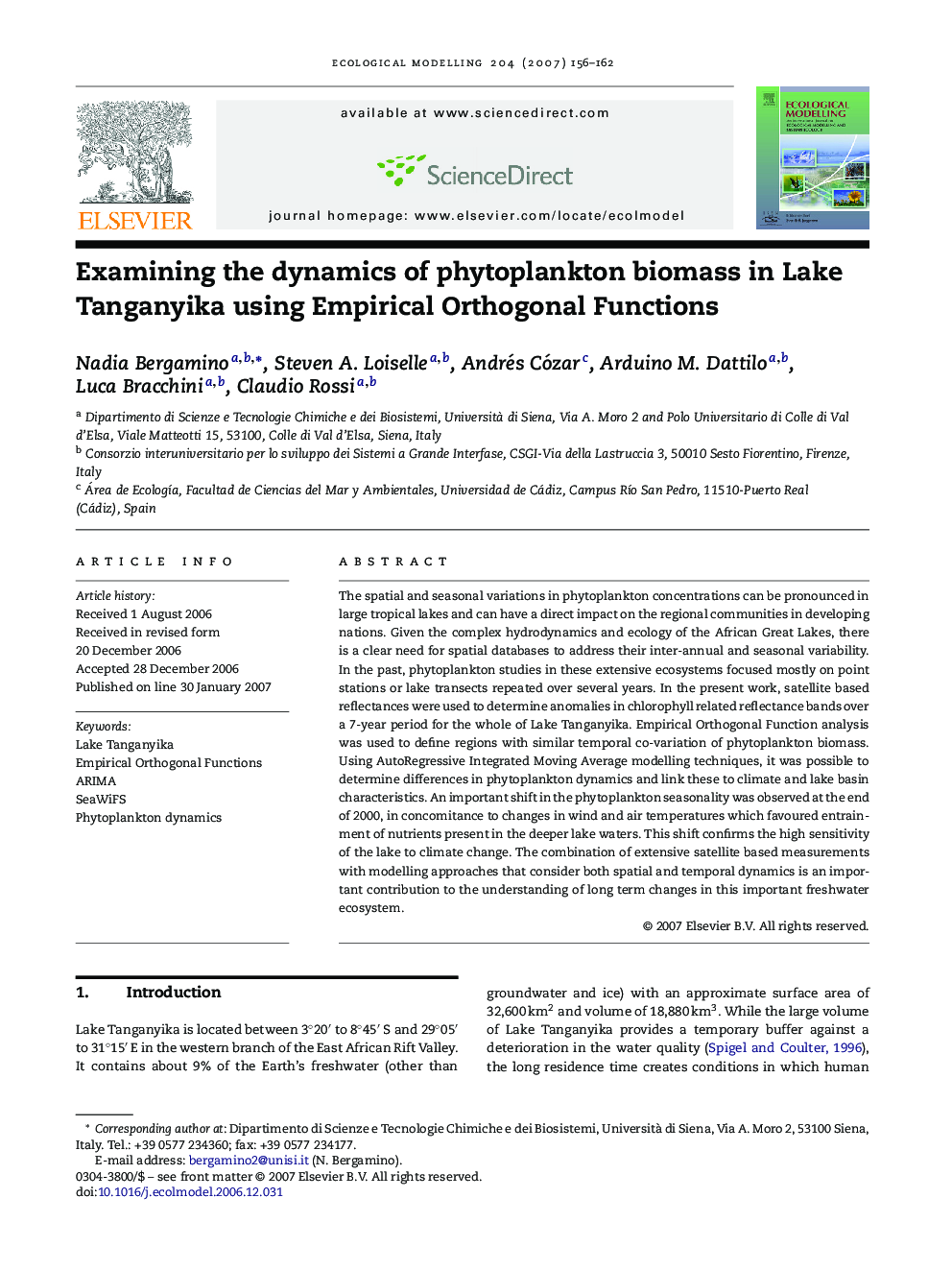| Article ID | Journal | Published Year | Pages | File Type |
|---|---|---|---|---|
| 4378817 | Ecological Modelling | 2007 | 7 Pages |
Abstract
The spatial and seasonal variations in phytoplankton concentrations can be pronounced in large tropical lakes and can have a direct impact on the regional communities in developing nations. Given the complex hydrodynamics and ecology of the African Great Lakes, there is a clear need for spatial databases to address their inter-annual and seasonal variability. In the past, phytoplankton studies in these extensive ecosystems focused mostly on point stations or lake transects repeated over several years. In the present work, satellite based reflectances were used to determine anomalies in chlorophyll related reflectance bands over a 7-year period for the whole of Lake Tanganyika. Empirical Orthogonal Function analysis was used to define regions with similar temporal co-variation of phytoplankton biomass. Using AutoRegressive Integrated Moving Average modelling techniques, it was possible to determine differences in phytoplankton dynamics and link these to climate and lake basin characteristics. An important shift in the phytoplankton seasonality was observed at the end of 2000, in concomitance to changes in wind and air temperatures which favoured entrainment of nutrients present in the deeper lake waters. This shift confirms the high sensitivity of the lake to climate change. The combination of extensive satellite based measurements with modelling approaches that consider both spatial and temporal dynamics is an important contribution to the understanding of long term changes in this important freshwater ecosystem.
Related Topics
Life Sciences
Agricultural and Biological Sciences
Ecology, Evolution, Behavior and Systematics
Authors
Nadia Bergamino, Steven A. Loiselle, Andrés Cózar, Arduino M. Dattilo, Luca Bracchini, Claudio Rossi,
